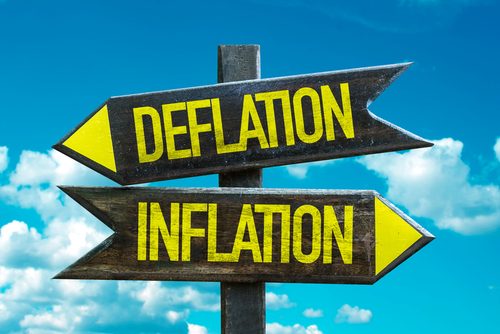After two surprise inflation prints in April and May, the Fed finally said it out loud – inflation is higher than expected, and is likely to increase to 3.4% in 2021. That’s a full percentage above where the Fed thought it would go in back in March.
The Fed is still maintaining that the increase in inflation is transitory and largely the result of supply chain shortages in specific sectors of the economy that will resolve as the recovery moves forward. While that’s probably the case, it’s still a good idea to cushion the impact on your portfolio if possible, and maybe even capitalize on the opportunity. Just because we haven’t seen inflation at this level in over a decade, that doesn’t mean there isn’t good data we can look at to get some ideas about how to manage through it.

It’s All About Value
Back in January, value stocks were touted as the trend for 2021. Investors looking at rising rates and higher inflation started shifting away from growth, and six months in value clearly has the wind in its sails. All is good so far, but what happens if inflation increases further than projected? What happens if everyone floods back to work, wages stabilize and fall, supply chains go bonkers and prices drop? (Unlikely but let’s be scientific here). Well, we’ve got an interesting chart.
According to the data, at certain levels of inflation value enjoys a premium over growth. The reason for this is that growth stocks are all about the future – most of their valuation comes from expectations of future earnings. If inflation rises, the present value calculation of those future earnings sinks. Value, on the other hand, is all about current earnings – so inflation doesn’t have much impact.
The St. Louis Federal Reserve tracks where bond market participants expect inflation to be, and as of June 23, 2021, the bond markets were betting that CPI would rise at an annualized rate of 2.45% over the next five years.
Looking at the chart, that would give value a premium over growth of almost 8%.

Any Other Interesting Observations?
Now that you mention it, yes. Certain sectors do better under inflationary conditions than others. This is due largely to pricing power. Sectors or companies that can pass the increase in prices on to consumers can maintain their margins despite higher inflation.
The winners? Usually Healthcare, Consumer Staples, and Utilities – all things consumers have to purchase. At the top of the stack – precious metals because they are seen as a store of value, mining stocks, and Energy. And not surprisingly, equity REITs because real estate prices are usually a good inflation hedge.
The Bottom Line
Inflation may or may not be here to stay – right now it’s all about how long the bumpiness lasts as we gear everything back up again. But with the Fed already talking about raising rates sooner than expected, the trend towards value is likely to have legs. We won’t really know what phase of the business cycle we are actually in until we get a bit further down the road, so completely shifting your asset allocation is probably a bit premature.
But you can certainly make some tactical shifts to potentially capture the opportunities presenting themselves in the market now, and look to preserve your wealth. And of course, if you have a concentrated equity position, or are holding a position with a very low basis in a company that is likely to be under inflationary pressures, it is a bit more complicated but ensuring the rest of your portfolio is well-diversified and can act as a hedge can make a big difference.
- Hulbert, Mark. Most Investors Don’t Like Accelerating Inflation — But This One Group Does. MarketWatch. February 27, 2021.



